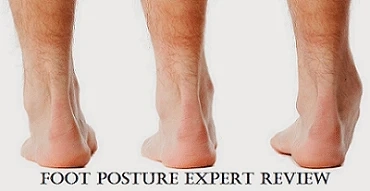Foot Posture Expert Review
Correct foot posture plays a significant role in foot health. It helps distribute body weight evenly across the foot, reducing stress on different areas of the foot and lower limbs. A good foot posture is when the feet align in a neutral position, with the toes pointing forward and the arches of the feet in their natural shape. Maintaining a proper foot posture is essential to prevent foot problems, improve gait and balance, and reduce the risk of injury to the foot and lower limbs. A poor foot posture puts excessive stress on some areas of the foot, leading to foot pain, discomfort, and injury. For example, excessively pronated foot posture can cause the arches to flatten and stretch the plantar fascia, leading to plantar fasciitis. It can also cause shin splints, Achilles tendonitis, and other foot and lower limb conditions.
Similarly, excessive outward rolling of the foot can cause the foot to be less flexible, leading to ankle sprains, stress fractures, and other foot and lower limb conditions.
Correct foot posture when standing involves:
- Stand with the feet hip-width apart
- Keep the weight of the body evenly distributed across both feet
- Keep the knees slightly bent
- Keep the hips level
Correct foot posture when walking:
- Take short and quick steps
- Land on the heel of the foot and roll through to the ball of the foot
- Push off with the toes
- Keep the foot in a neutral position throughout the gait cycle
Maintaining a good foot posture involves:
- Wearingshoes that fit and provide good arch support is essential for maintaining good foot posture. Look for shoes with a wide toe box, a firm heel counter, and a cushioned sole. Avoid high heels or flats with no arch support.
- Consider orthotics, either custom-made or over-the-counter,that can help correct foot posture and provide extra support to the feet. Help alleviate foot pain, improve gait, and prevent further injury.
- Strengthen foot musclesthrough regular foot posture correction exercises and stretching to maintain good foot posture. Exercises like toe curls, calf raises, and ankle circles can help strengthen the foot muscles.
- Maintain a healthy weight to reduce pressure and improve foot posture as excess weight can lead to foot pain and discomfort.
- Seek treatment for foot conditions and injuries to prevent long-term damage and further complications. Delaying treatment can lead to further damage and complications, which can make it more difficult to correct foot posture.
Baby’s Foot Posture
Babies typically have a unique foot posture from adults due to their natural development and growth. At birth, a baby\'s foot is generally flat with a little curve at the ball of the foot,known as a "flexible flatfoot" and is a normal part of a baby\'s development.
As the baby grows, the foot gradually develops an archbetween the ages of 2 and 3 years and continues to develop until around age 8. During this time, the foot may appear flat than arched.
Some babies may have a foot condition that affects their foot posture. If you have concerns about your baby\'s foot posture, it\'s best to consult with our podiatrist EjodamenShobowale, DPM of DeNiel Foot and Ankle Center for evaluation and treatment.



